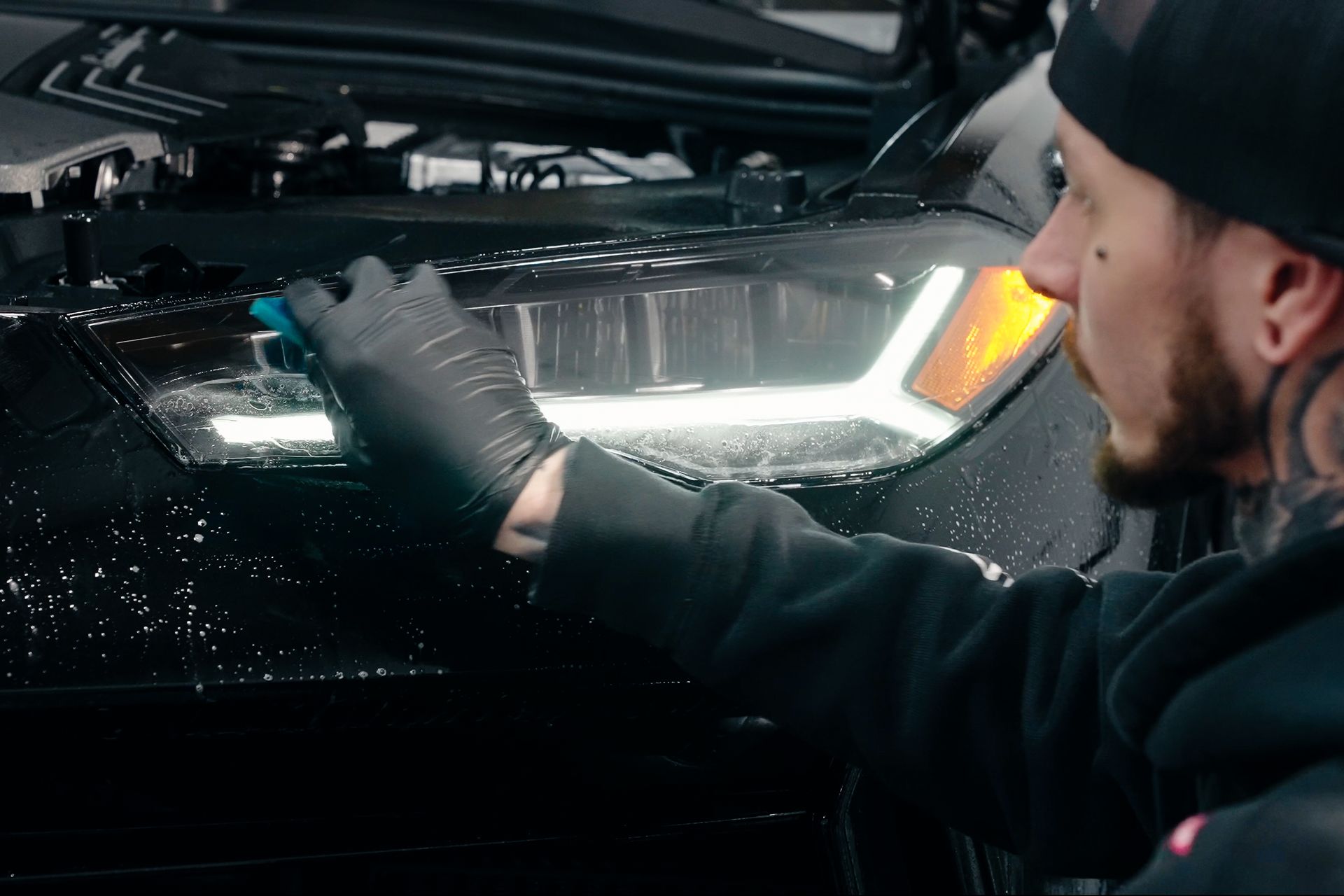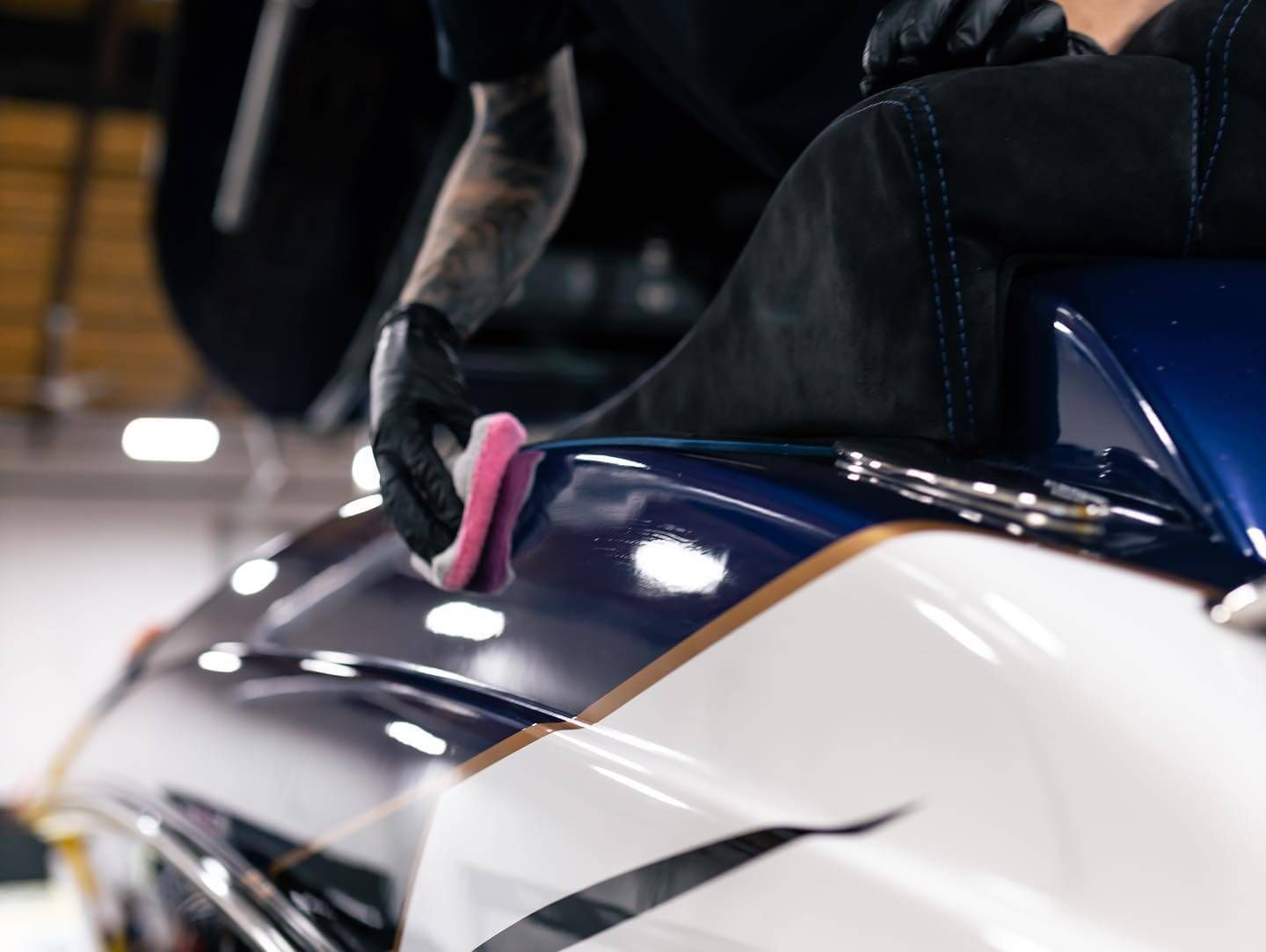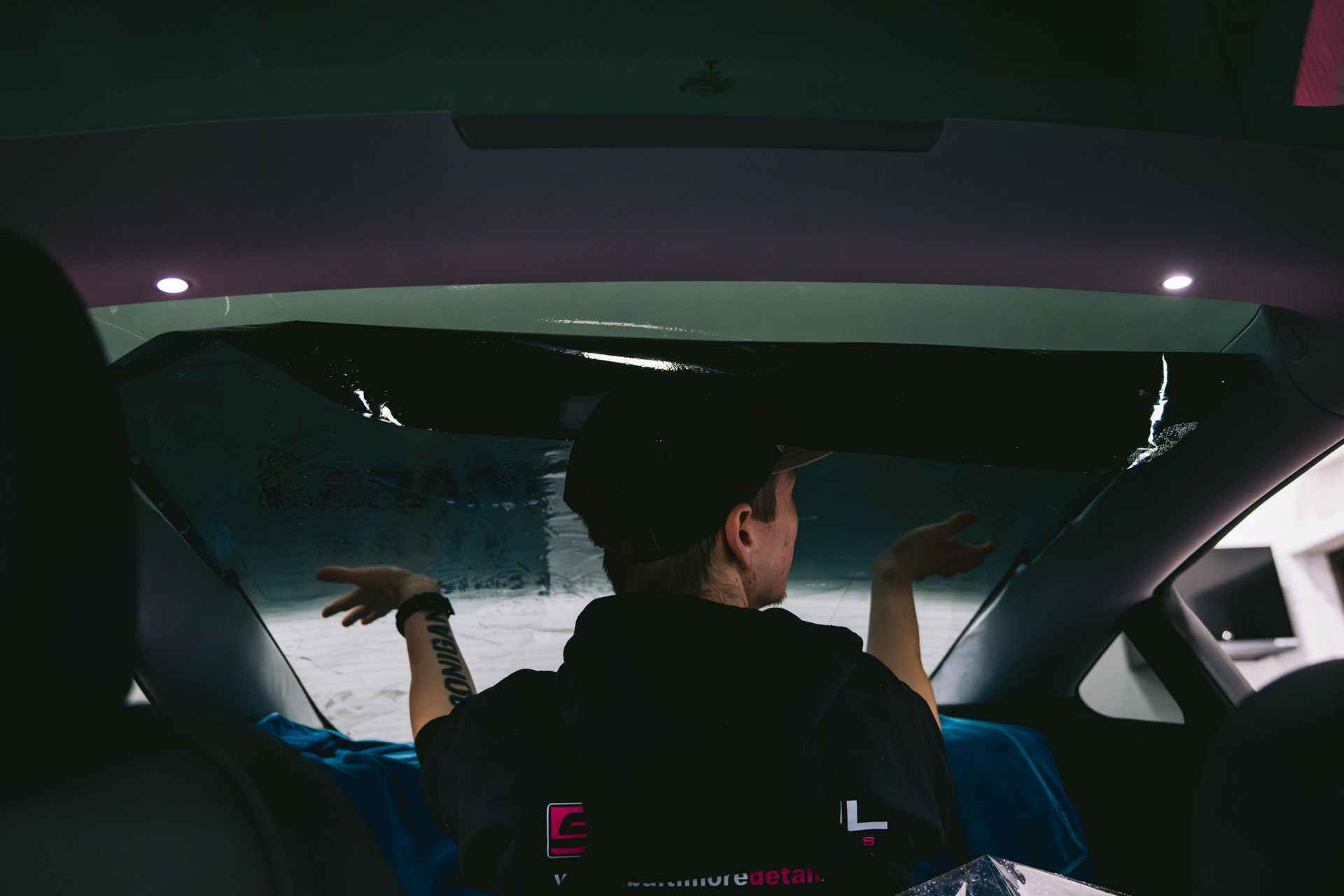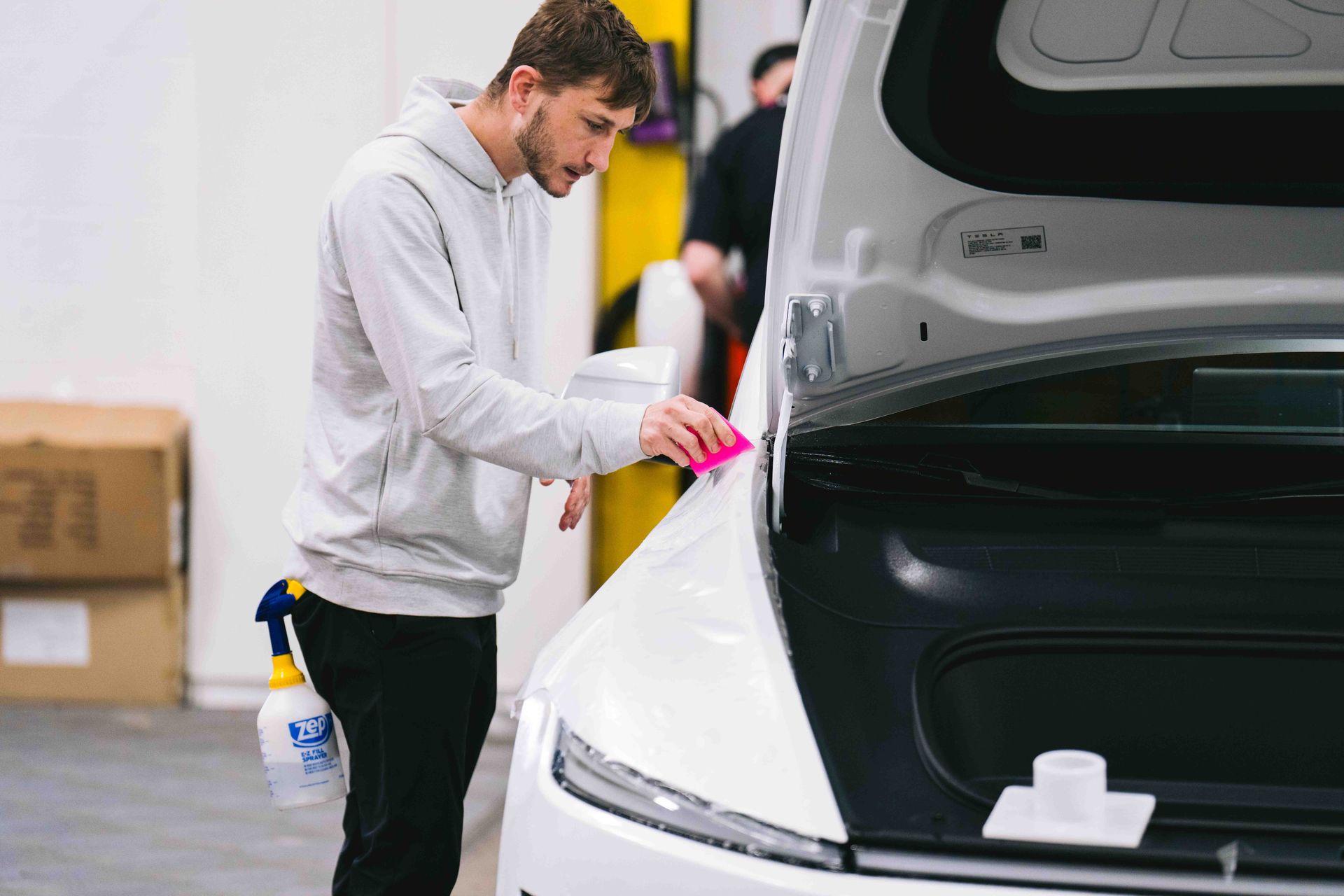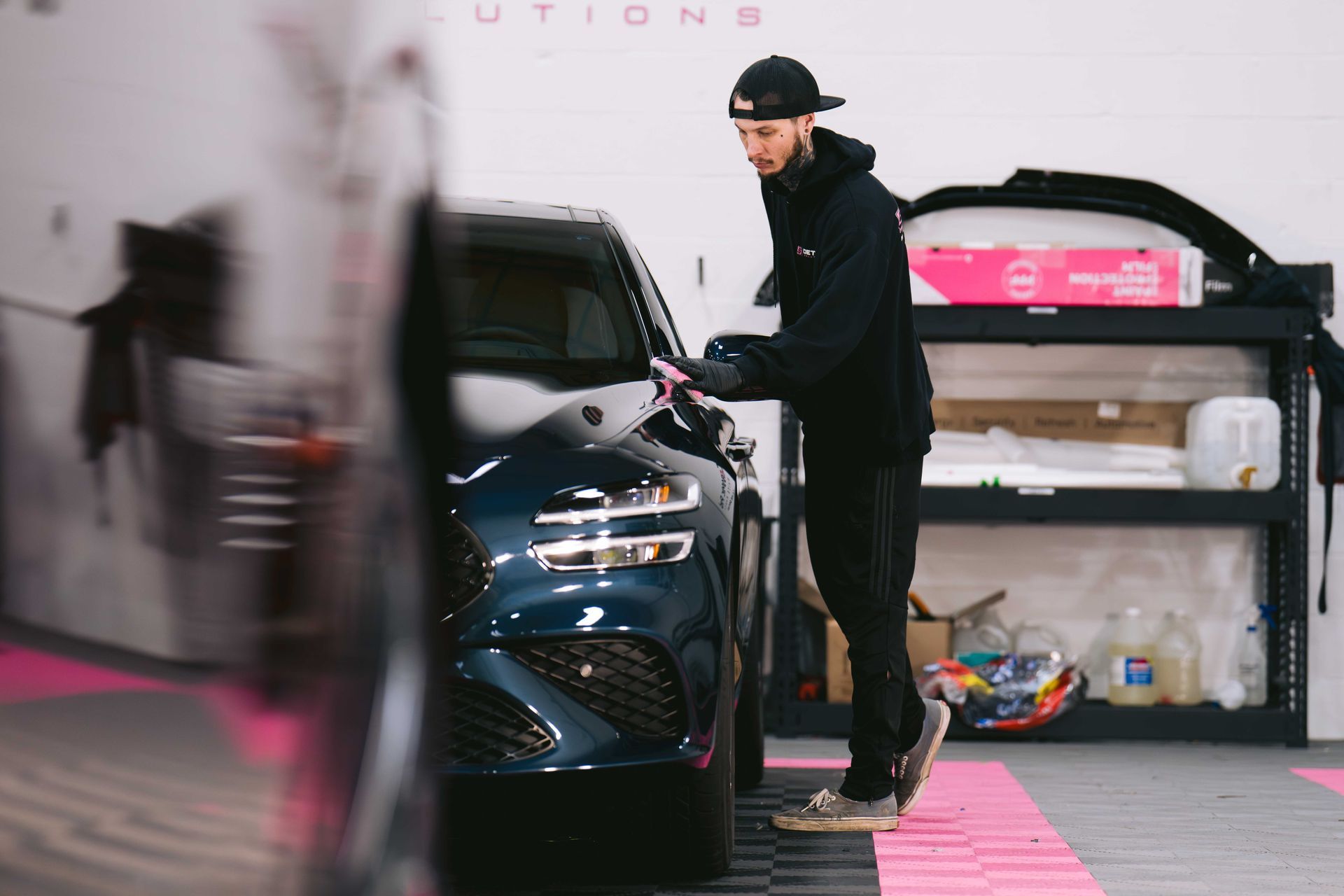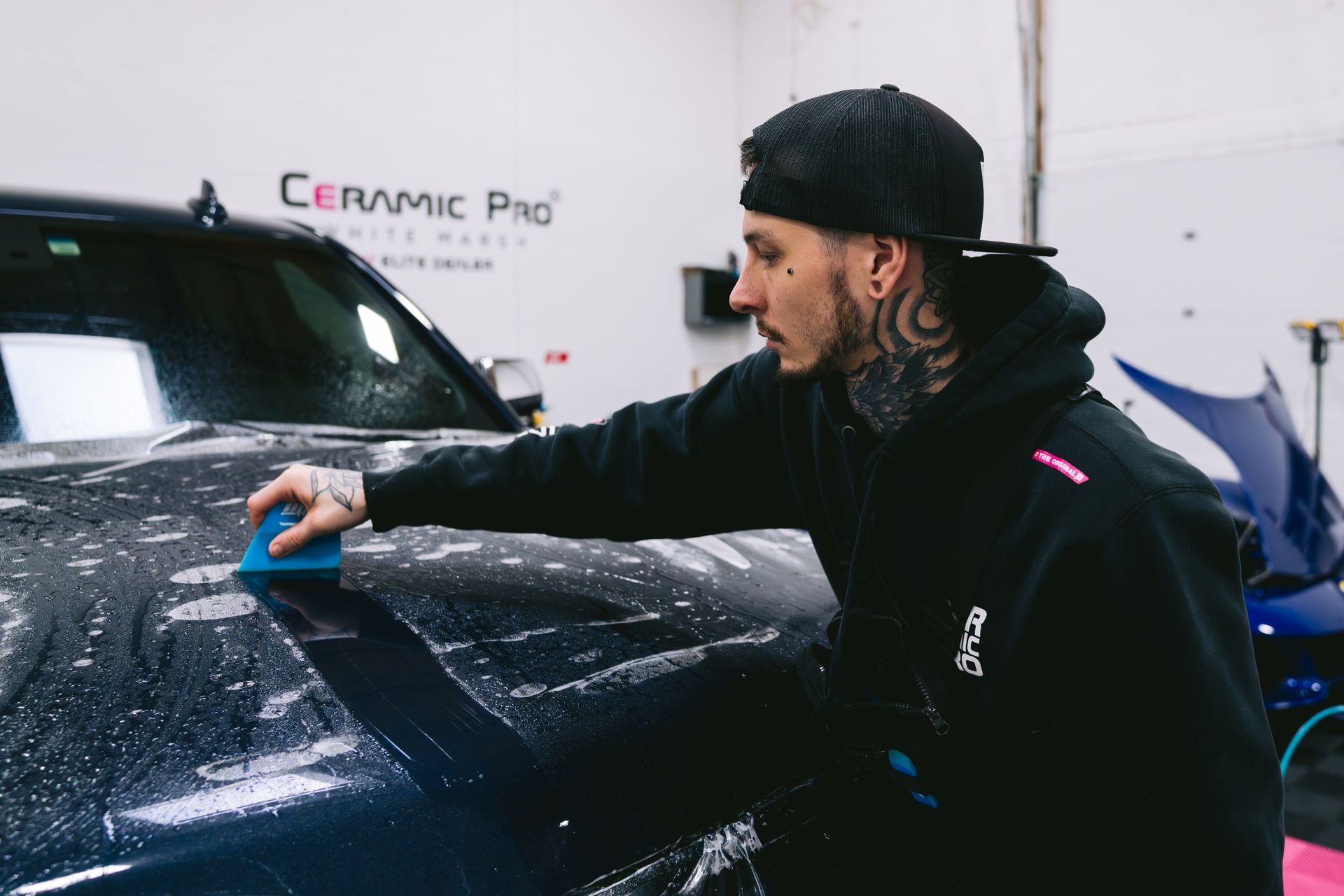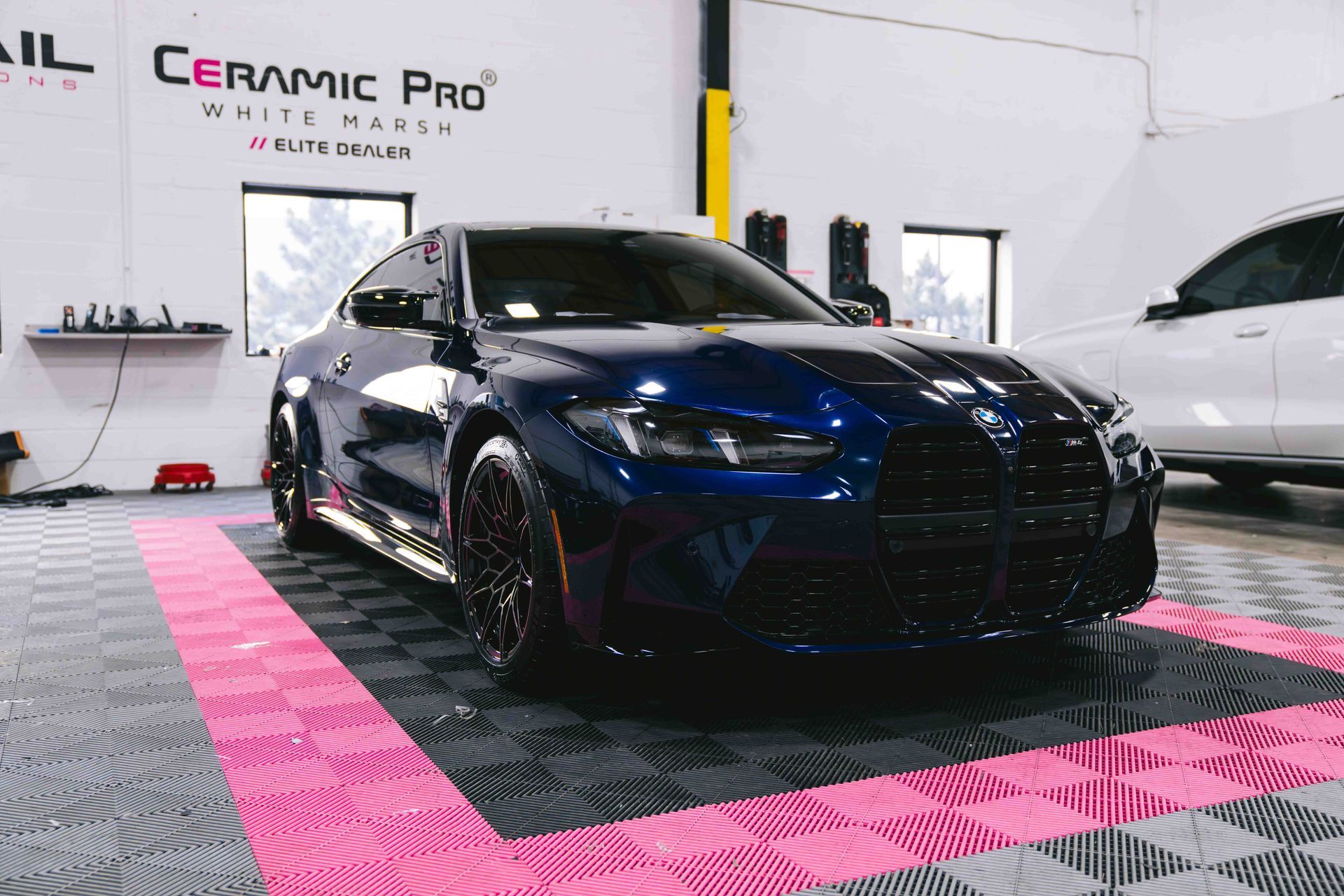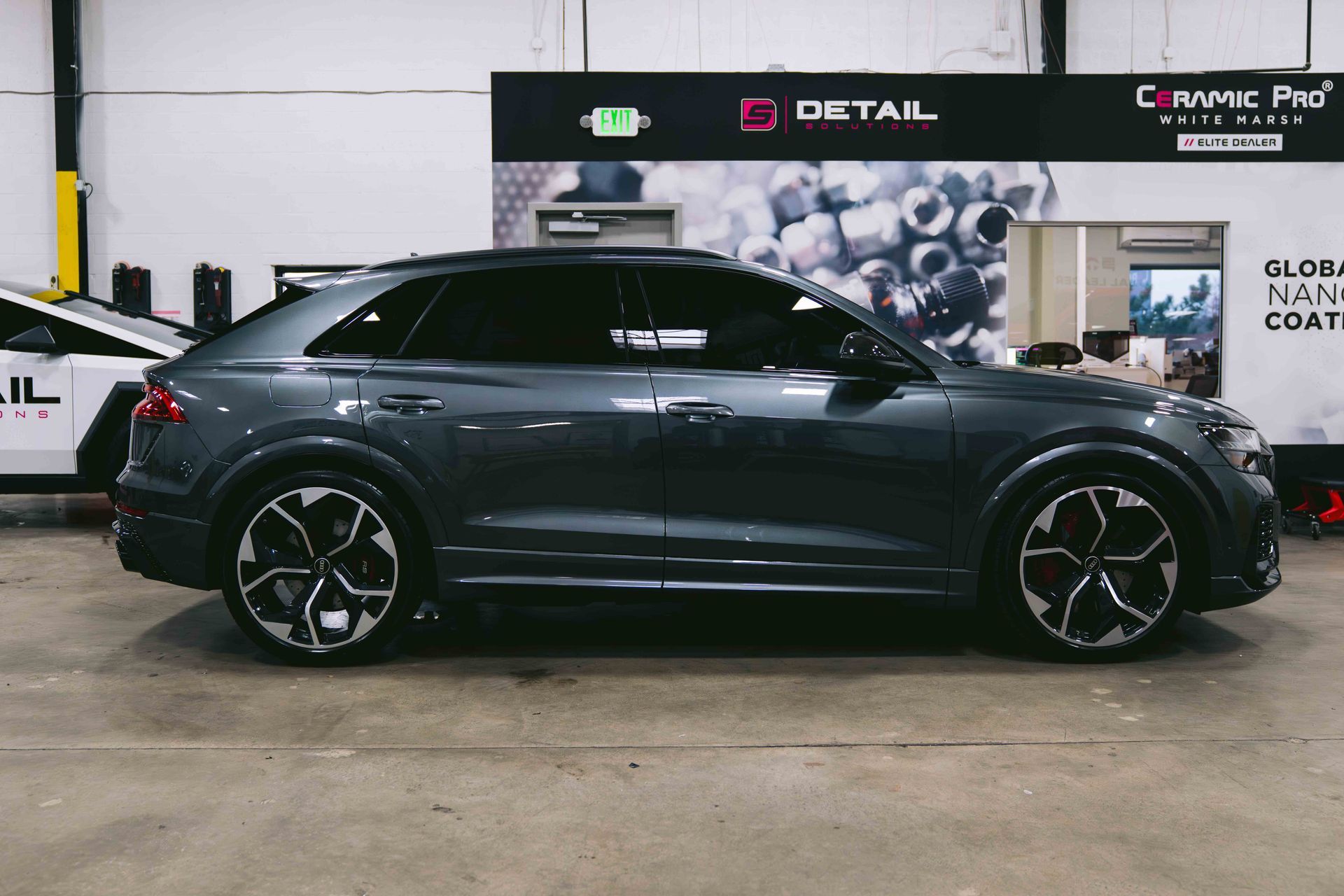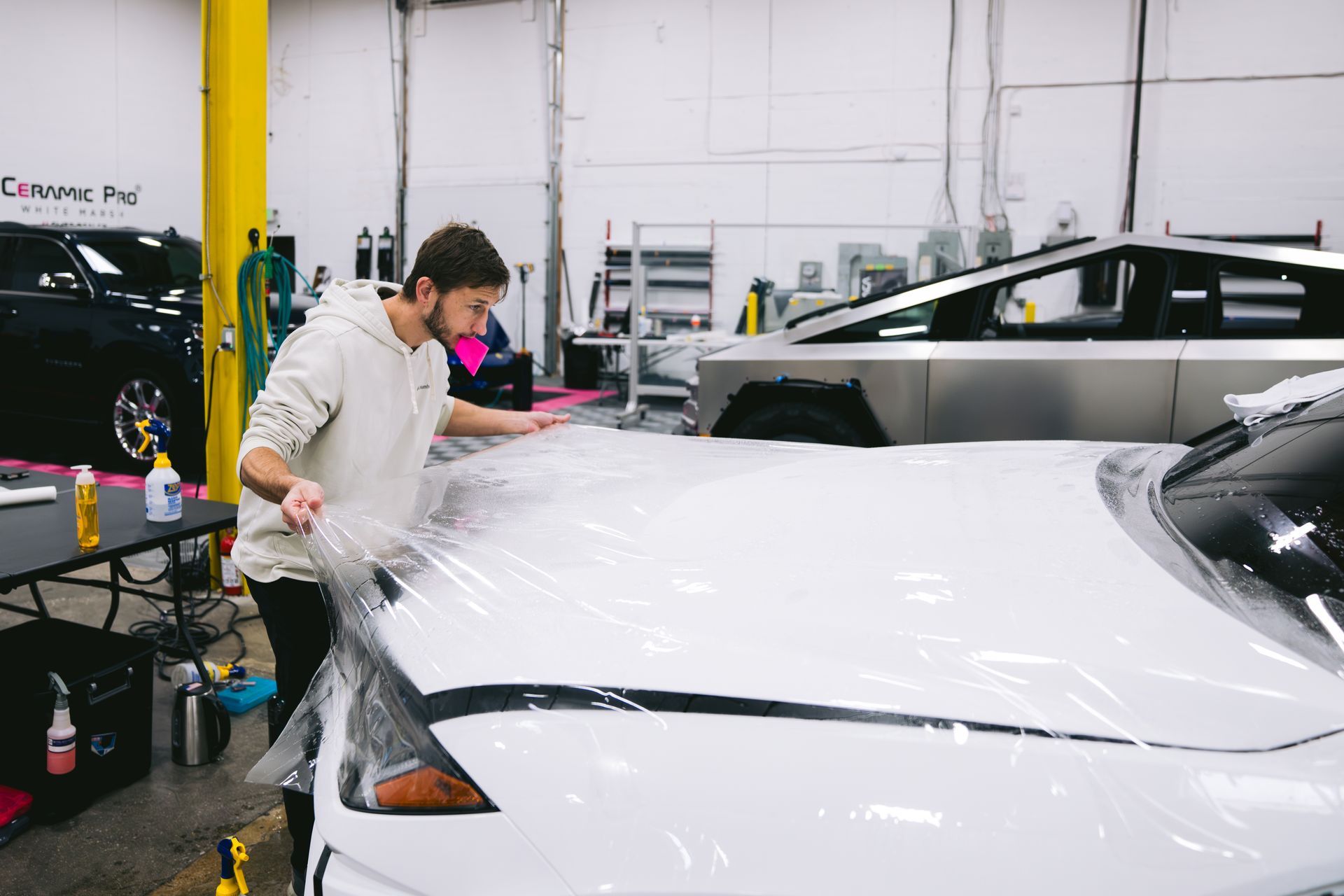Time for a PPF Replacement? Key Warning Signs to Watch For
When it comes to protecting your vehicle's paint from scratches, chips, and the unforgiving elements of nature, Paint Protection Film (PPF) can be a game-changer. Think of it as a superhero cape for your car, safeguarding its appearance and value. But just like every superhero needs to know when it's time to hang up their cape, you need to recognize when your PPF is ready for a change. Whether you’re a proud car owner or someone who spends hours washing and waxing their ride, knowing the signs that indicate it's time for a PPF replacement, such as peeling, can help you save money and keep your vehicle looking sharp. Let's explore the top five early warning signs that it might be time to refresh that protective layer.
Key warning signs that indicate it's time for a PPF replacement include visible scratches or marks, peeling, bubbles or air pockets forming under the film, discoloration due to UV exposure, and any cracks or tears in the material. Additionally, if your PPF has been in place for approximately six to ten years, it is recommended to consider replacing it to ensure optimal protection for your vehicle's paint.
Indicators Your PPF Needs Replacement
The first sign to look out for is visible scratches and marks on the surface of the paint protection film. While minor scratches may not seem alarming, they can suggest that the protective integrity of the film is beginning to diminish. Regular inspections are important; even light scuffs can signal wear that, if left unchecked, could allow contaminants to permeate the surface and reach your car's paint. As I’ve seen in my experience, an early catch can save you from a costly automotive repair later!
However, scratches aren't the only red flag.
Next, keep an eye out for bubbles or air pockets forming beneath the film. These can arise due to improper installation techniques or simply the age of the material after prolonged exposure to environmental conditions. Not only are these bubbles unsightly, but they also harbor moisture that can lead to delamination, essentially loosening the bond between the PPF's adhesive and your vehicle’s surface. If you notice these, it’s time for immediate action—prolonging the replacement could result in more significant damage than you might anticipate.
As we continue to examine signs of PPF degradation, let’s discuss discoloration.
Discoloration and yellowing are key indicators that your PPF has been depleted by UV exposure. It’s common for films to lose their clarity over time; studies show some PPFs can lose up to 50% of clarity within just five years! Consequently, when you start seeing a yellowish tint, it’s vital as this signifies that the film's protective qualities have weakened. Remember, this isn’t just about aesthetics; faded film leaves your car’s paint vulnerable to damage from external harsh elements.
Now let’s highlight another important visual cue.
Look for any cracks and tears in your PPF. These physical damages expose the underlying paint and significantly increase its risk from environmental factors like dirt, water, and UV rays. Even small cracks can grow larger over time if left unattended, potentially leading to much bigger problems down the road. A vigilant eye here can prevent disaster and unnecessary expense.
Finally, let's discuss a practical consideration regarding aging.
When assessing the longevity of your PPF, consider if it’s nearing the end of its warranty period. Typically, warranties for PPFs range anywhere from five to ten years, acting as a guideline for when replacement should be contemplated. Keeping an eye on your film's condition in conjunction with its warranty timeline ensures that your vehicle remains protected and your investment in its aesthetic integrity is maximized. Lastly, consider the age of your PPF. Generally speaking, it's best practice to replace PPF after six to ten years depending on wear and environmental exposure. The durability of your PPF contributes significantly to the lifespan of your vehicle's aesthetic protection. Adhering to this timeline helps ensure that your car remains adequately protected from chips and scratches while maintaining its overall appearance and value. In addition to regular assessments, taking care of your PPF is crucial for extending its lifespan.
Keeping an eye on these indicators allows you to maintain both your vehicle's aesthetics and protective qualities effectively. Transitioning into our next focus area will provide insight into identifying specific types of surface damage that may require attention.
Visible Scratches and Marks
Scratches might appear to be mere aesthetic issues, but they often signify more concerning conditions of your PPF. Each mark tells a story about the daily challenges your vehicle faces—from road debris to errant shopping carts—and reveals the film's ability to protect your paint. Regularly inspecting for scratches is essential, as it provides insights into how well the PPF performs and its overall durability.
Typical Scratches and Their Implications:
For instance, when you see surface-level scratches, it indicates that the outer layer has been breached slightly, but it still retains most of its protective qualities. However, these small marks can accumulate over time and lead to bigger problems if ignored. They require regular monitoring and perhaps a gentle polishing treatment to maintain their aesthetic appeal and extend the lifespan of the film.
The appearance of multiple scuffs can signal that your film is nearing the end of its lifecycle, suggesting widespread wear across heavily trafficked areas like the front bumper or sides—zones that take a beating during normal driving conditions. If those marks seem unmanageable, a full replacement becomes necessary to restore optimal protection, preserve resale value, and ensure the long-term care of your vehicle, since poorly maintained PPF can decrease a vehicle’s appeal.
Signs of Bubbles and Air Pockets
Bubbles and air pockets may seem minor, but they can undermine the entire purpose of your PPF. They are not merely cosmetic blemishes; they can indicate serious underlying issues that affect the longevity and effectiveness of the film. The presence of bubbles suggests that moisture has become trapped, and this can be particularly concerning. If these pockets remain unchecked, they might lead to delamination, where the film lifts away from the surface, diminishing its protective capabilities and reducing its durability.
Causes
One of the primary causes of bubble formation is improper installation. An uneven temperature during application or inadequate pressure can create a layer where air gets trapped beneath the film. Each step in the installation process is critical, as even minor mishaps can lead to future problems. Additionally, environmental factors such as temperature fluctuations can cause expansion and contraction within the PPF material, leading to those dreaded bubbles. A study found that around 30% of PPF installations, where such issues were not addressed with a proper protective coating or finish, experienced bubbling within the first year for these reasons.
Therefore, it's essential to consider both the installation quality and conditions when choosing a service provider and to ensure they use the best techniques available.
Prevention
To prevent bubbles from forming in the first place, consistent inspection is crucial. Conduct gentle surface checks every month to catch early signs. If you do spot a bubble, immediate action is essential. Using a heat gun can help smooth out those pesky bubbles. Just warm the area carefully—too much heat can damage the film's finish!
However, if you find that problems persist or worsen despite your efforts, it may be time to replace the PPF entirely and start fresh with a new coating.
Regular inspections not only help maintain aesthetics but also prolong the life of your PPF by ensuring it remains effective over time.
Recognizing the signs of bubbles and air pockets early on ensures that your paint protection film continues to offer robust defense against scratches, chips, and other environmental threats. Taking proactive steps will save you from more significant headaches down the line regarding both aesthetics and vehicle integrity.
Discoloration and Yellowing
Discoloration and yellowing of the PPF are reliable indicators that its UV shielding capability is declining. Over time, prolonged exposure to harmful ultraviolet rays can cause the film to take on a yellowish hue. This discoloration isn't merely a cosmetic concern; it signifies a significant reduction in the film's protective properties. When you notice these changes, it’s crucial to act promptly, as waiting too long may leave your car exposed to damage from the sun and other environmental factors.
UV Impact
Think of it like sunscreen; once expired, its effectiveness diminishes. Just as you wouldn't rely on old sunscreen for a day out under the sun, a yellowed PPF no longer offers full protection to your vehicle's surface. As this vital layer deteriorates, it increases the risk of paint chipping, fading, and damage from road debris—much like how neglecting to reapply sunscreen invites sunburn.
You'll want to be proactive about assessing the condition of your PPF regularly. One way to monitor its health is through visual inspection, ideally in bright light, where you can easily spot changes in color or texture. Touch testing also helps; if the surface feels sticky or less smooth than before, this can indicate a compromised film.
- UV Protection Monitoring: Look for signs of fading or yellowing under the film.
- Physical Inspection: Check for any imperfections or rough patches.
- Hydrophobic Properties Check: Simple water bead tests can reveal deteriorating performance.
If you’re observing significant yellowing or other signs of degradation on your PPF, don’t hesitate to consult with professionals who have specialized tools for evaluating PPF thickness and protecting performance. These experts often use advanced materials designed to withstand environmental challenges, including UV damage, ensuring your vehicle remains shielded from potential harm. It is much easier—and often more economical—to prevent major issues before they arise, maintaining the integrity of your vehicle's protection.
Cracks and Tears in the Film
When you notice cracks or tears in your PPF, it’s not just an aesthetic issue; it signals a serious risk to your vehicle's exterior. These breaches can expose the paint beneath to harmful elements such as dust, moisture, and UV rays, leading to significant damage over time.
Immediate Actions
The moment you spot these imperfections, reaching out for replacements should be your first course of action. Addressing cracks or tears immediately can prevent further complications like rust formation or paint degradation over time. Ignoring the problem, especially considering the effects of UV damage, may lead to costly repairs that could have easily been avoided. By replacing either the affected segment or potentially even the entire film, you safeguard against deeper issues that could arise from unresolved damage.
Many drivers share that addressing these issues promptly helped them avoid more considerable repairs down the line.
Furthermore, it's worth noting that with modern PPFs, many are designed to self-heal from minor scratches when exposed to heat. However, they are not invincible.
Our readers often recommend trusted services listed on Baltimore Detail for PPF maintenance and replacement. These professionals utilize high-quality material and expert application techniques to guarantee excellent coverage, fortifying your vehicle against the ravages of the road while maintaining its pristine appearance.
Age and Wear of PPF
Over time, even the best Paint Protection Films start to exhibit wear and tear, signaling that it may be time for a replacement. Research indicates that a high-quality PPF should maintain its optimal performance between six to ten years, but this is heavily influenced by environmental factors, particularly UV damage.
Sun exposure, harsh weather conditions, or even acidic bird droppings can accelerate deterioration. Think of your PPF as a shield; if it starts to weaken and show cracks, especially from UV damage, the paint beneath it becomes more vulnerable.
Aging Indicators
When assessing the health of your PPF, keep an eye out for these key indicators of aging:
- Loss of Adhesion: One of the first signs is when you see edges starting to peel away from the vehicle body. This compromises the protective barrier and can allow dirt and moisture to creep underneath, leading to potential paint damage.
- Dulling: A once-clear film losing its shine is another red flag. If your PPF appears cloudy or dull compared to the surrounding paint, it's a sign that sunlight has degraded some of its protective qualities. Not only does this affect aesthetics, but it also suggests reduced UV protection.
- Frequent Maintenance Needs: If you find yourself constantly cleaning or repairing minor issues with the film, it could be more cost-effective to consider replacing it altogether. Regular upkeep is vital, but if that means frequent touch-ups, then replacement might save you time and headaches in the long run.
Regularly inspecting your PPF for these signs ensures you stay ahead of potential problems before they escalate into costly repairs.
Paying attention to these aging indicators allows you to make timely decisions about your PPF. By being proactive rather than reactive, you maintain continuous protection for your vehicle's precious paintwork.
Thus, staying informed on your PPF's condition is crucial not just for appearances; it’s integral to preserving the value and integrity of your vehicle itself.
So next time you wash your car or prepare for a road trip, take a moment to conduct a careful assessment of your film—your future self will thank you!
To ensure your vehicle remains protected against all elements, don't hesitate to contact us at
Baltimore Detail. Call us at (410) 238-3000 for any questions or concerns regarding PPF maintenance or replacement.




